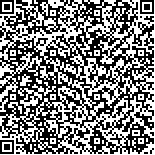下载中心
优秀审稿专家
优秀论文
相关链接
摘要

InSAR技术作为重要的对地观测技术之一,已在城市、矿山、地质灾害等地表形变监测领域得到广泛应用与探索,特别是在滑坡灾害形变监测中具有很强的实用性。为全面、准确及深入认识和梳理InSAR技术在滑坡灾害应用中的前沿科学问题、局限性、面临挑战及未来发展趋势,以期更好地服务于滑坡灾害的防治与监测。以InSAR技术滑坡灾害应用研究为主要脉络,系统阐述其研究进展:(1)以滑坡监测中应用的主要InSAR方法概述为切入点,系统梳理了各类主要方法的适用范围、优缺点及内在联系;(2)基于早期识别探测、不同量级形变监测、活动模式与三维信息获取、形变与诱因耦合4个视角,深入探析InSAR技术在滑坡应用中的最新进展、趋势及目前应用中存在的关键问题与挑战;(3)针对InSAR技术系统的局限性、滑坡灾害的特点,剖析了InSAR滑坡监测中存在的几何畸变、密集植被覆盖、大气干扰、三维形变信息获取、精度评定、滑坡形变的复杂性和非线性等问题,并对相应问题的解决提供了可行性的方案与建议措施;(4)基于InSAR滑坡行业体系构建的视角,结合人工智能(AI)、机器学习、无人机遥感及地学领域地震台网等其他观测技术,从数据处理、与其他新型技术融合对未来InSAR在滑坡应用研究进行总结和展望。
InSAR technology, one of the important earth observation technologies, has been widely used and explored in the field of surface deformation monitoring, such as city, mine, and geological disaster, especially in landslide deformation monitoring. This study systematically expounded and summarized the relevant progress worldwide in recent years from three aspects of InSAR methods, thematic fields, and existing problems. This task is conducted to fully and accurately understand the frontier scientific problems of the InSAR technology in landslide disaster application and sort out its limitations, challenges, and future development trend. Moreover, this work is carried out to better serve the landslide disaster control and monitoring. The specific content includes the following aspects:(1) Based on the overview of the main InSAR methods used in landslide monitoring, our research comprehensively reviewed and summarized the application scope, advantages, and disadvantages and internal relations of various InSAR methods. A reasonable understanding of the characteristics of various methods is an important part of the scientific design of the InSAR landslide application monitoring scheme.(2) We analyzed the four relevant topics in recent years regarding InSAR landslide early identification and detection, deformation monitoring of different magnitudes, activity patterns, and 3D information acquisition, and coupling of deformation and inducement. This work focused on the cases of major outstanding innovations in the existing applications and summarized the deficiencies and challenges of the corresponding topic content in the current research. First, starting from the early identification of InSAR landslide, a research hotspot, comparative analysis, and discussion are made on its research scenes by country and situation. In view of the different characteristics of the deformation variables at various stages of landslides, this research focused on the effective monitoring and acquisition of landslide deformation information, landslide movement patterns, and 3D landslide information. This work discussed in detail the progress made in the past and current problems. Then, this work demonstrated the application boundaries and effective auxiliary methods of different InSAR technologies in landslide monitoring and made a comprehensive and in-depth analysis of the development of InSAR technologies. This work focused on the analysis of the current InSAR technology and data on the progress of landslide activity mode information acquisition and landslide 3D deformation research. Moreover, this work summarized the advantages and disadvantages of various methods that can obtain 3D landslide information. Finally, this work briefly discussed the current progress and inadequacies related to the coupling of InSAR deformation and incentives and the multisource/metalandslide monitoring cases with InSAR as the main supplement to other remote sensing technologies.(3) The limitations of the InSAR technology system and the characteristics of landslide disasters were summarized according to the research progress made under the existing conditions. We analyzed the problems of geometric distortion, dense vegetation coverage, atmospheric interference, 3D deformation information acquisition, accuracy evaluation, complexity, and nonlinearity of landslide deformation in InSAR landslide monitoring. This work also provided concrete and feasible solutions and recommended measures for solving the corresponding problems in this research.(4) From the perspective of the construction of the InSAR landslide industry system, we combined artificial intelligence, machine learning, UAV remote sensing, seismic network in the field of geosciences, and other observation technologies in our analysis. In view of data processing and integration with other new technologies, the future research of InSAR in landslide applications was summarized and prospected.

